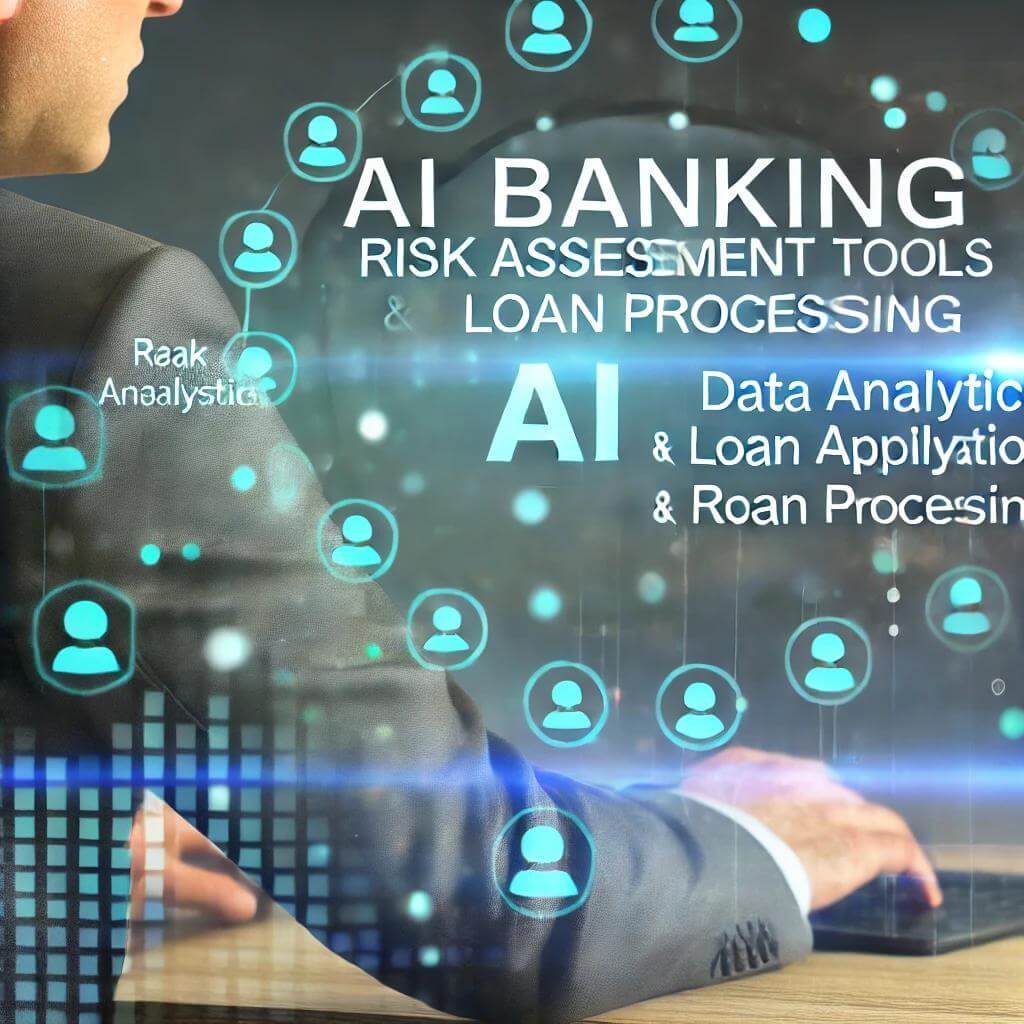AI in Banking: Risk Assessment & Loan Processing
In today’s fast-paced world, the banking industry is no stranger to transformation. Artificial Intelligence (AI) has made its mark, especially in areas like risk assessment and loan processing. These technologies are helping banks make smarter decisions, process loans faster, and ultimately provide a better experience for customers.
Risk Assessment: Reducing Uncertainty
One of the most crucial aspects of banking is determining whether a person or business is a suitable candidate for a loan. Traditionally, banks would evaluate credit scores, income history, and other financial data. However, with AI, this process has become faster and more accurate.
How AI Enhances Risk Assessment
AI allows banks to analyze a much wider set of data than before. Rather than just relying on a credit score, AI systems can pull in multiple factors to paint a clearer picture of someone’s financial health.
- Real-Time Analysis: AI can process financial data instantly, allowing banks to assess a person’s risk in real time.
- Pattern Detection: AI can detect financial behaviors that may signal risk, such as inconsistent income or unusual spending patterns.
- Broader Data Sources: AI isn’t limited to traditional financial data. It can also analyze non-traditional data sources like transaction history, even certain social indicators, to better assess risk.
For example, imagine a bank using AI to review a loan application. Instead of just looking at the applicant’s credit score, the system might also analyze recent spending trends, employment history, and even factors like social behavior to calculate the likelihood of the applicant repaying the loan.
| Traditional Risk Assessment | AI-Driven Risk Assessment |
|---|---|
| Focuses on credit scores | Considers broader, non-traditional data |
| Takes time to review manually | Provides real-time data processing |
Loan Processing: Speeding Up the Process
One of the biggest challenges customers face when applying for loans is the time it takes to process applications. This is where AI steps in to streamline the process.
How AI Improves Loan Processing
AI automates many of the manual steps that traditionally slowed down loan approvals. Instead of waiting days (or even weeks) to hear back about a loan, AI makes it possible for customers to get answers quickly.
- Document Automation: AI can read and process forms, reducing the need for manual data entry. This cuts down on errors and speeds up the overall process.
- Fraud Detection: AI is excellent at spotting patterns and anomalies. This helps banks quickly identify and prevent fraudulent loan applications.
- Faster Underwriting: AI systems can assess loan applications and decide whether to approve or reject them based on predefined rules. This means faster approvals for customers and less manual work for the bank.
Imagine applying for a loan and getting an approval within minutes. With AI handling the paperwork and checking for risks, this is no longer a distant dream but a reality for many banks.
Benefits of AI in Banking
The benefits of using AI in risk assessment and loan processing are clear:
- Efficiency: AI speeds up processes, meaning customers get decisions faster.
- Accuracy: By reducing human error and analyzing more data, AI provides a more accurate risk assessment.
- Cost Savings: With automation in place, banks can lower their operational costs.
- Enhanced Fraud Detection: AI’s ability to analyze vast amounts of data helps banks detect and prevent fraud more effectively.
Challenges of AI in Banking
While AI brings many advantages, it also poses some challenges, especially around trust and fairness.
Data Privacy Concerns
AI systems rely heavily on customer data to function effectively. This raises concerns about how that data is collected, stored, and used. Banks must comply with privacy regulations like GDPR to ensure customers’ data is protected.
Bias and Fairness
One of the potential risks with AI is the bias that can creep into decision-making. If AI models are trained on biased data, they could make unfair decisions—such as denying loans to certain groups of people. Banks need to be careful to ensure their AI systems are fair and transparent.
Real-World Applications of AI in Banking
AI is already making an impact in the banking world, helping banks operate more efficiently while offering customers a better experience.
Risk Management
In addition to assessing loan applicants, AI is used for risk management at a larger scale. AI systems can monitor markets in real-time, identify potential risks, and help banks take action before problems arise.
Customer Service
AI is also making a mark in customer service. Virtual assistants and chatbots powered by AI are helping customers get answers to their questions faster, whether it’s checking their account balance or getting help with a transaction.
Conclusion
As AI continues to evolve, its role in risk assessment and loan processing will only grow. Banks are already seeing the benefits of faster decision-making, improved accuracy, and cost savings. While there are challenges to navigate, such as data privacy and fairness, AI’s potential to improve the banking industry is undeniable.


Post Comment